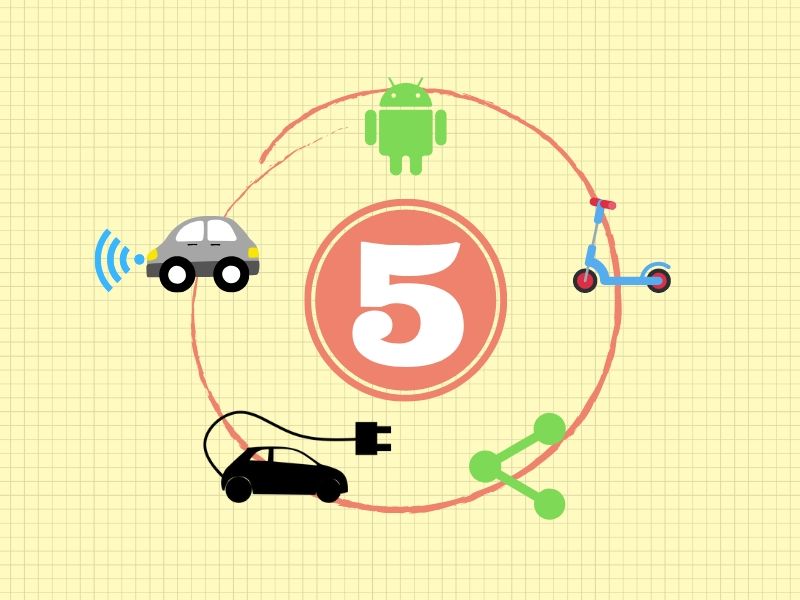It is no news that we are well into a mobility revolution, a process that started several years ago. The incremental upgrading of legacy transportation is being rapidly overtaken by the effect of two interacting forces: technology and a new economic models. These forces for change are the synthesis of five mobility- revolutionizing factors which I have identified below:
The five factors that are revolutionizing mobility
We are now seeing a technology and cultural change. On one side we see automotive producers introducing innovative technology in their vehicles, and on the other side we see the changing needs of users. Technology and the new economic model interact with each other. For example if, on one side, ‘car sharing’ is growing, on the other side technological innovation permits lower environmental-impact vehicles.
The five factors that I have identified are: ‘green’ attitudes, software, autonomous driving, asset access and integrated mobility.
1) ‘Green’ attitudes
Electric vehicles are an established reality and their use is growing. This growth is driven by technological development in the automotive industry, by governement policies and by the consumer. In 2019, the BEV (battery electric vehicles) represented just 3% of all vehicles sold worldwide. But the trend is growing – Wood Mackenzie analysts estimate that electric vehicles will represent 14% of all vehicles sold in 2030.
Battery, associated technologies and the availability of e-charging locations are enabling the growth of BEV. In the past, the shortcomings of these two factors were an obstacle to the proliferation of BEV. Today, battery technology makes 300 km between charges possible. e-charging stations are spreading faster and faster thanks to the entry of several operators in the market. In Italy alone, we counted eight national operators and a myriad of independent operators.
Although public sensitivity towards environmental issues is growing considerably, electric cars still suffer at an economic level compared to fossil-fuel vehicles. Government incentives to narrow this economic gap are beginning to work toward making the operation and ownership of electric vehicles cheaper. The role of politics at this moment is most important to the growth of this sector.
Electric-mobility will lower the enviromental impact and noise pollution of vehicular traffic and make urban centres more liveable. The downside may be the disappearance of a large part of auto-parts components for cars and therefore the loss of a lot of jobs.
2) Software
One of the most interesting sectors now under intense development is software cars. That it is a key factor was emphasised by statements made in mid-January 2020 by Herbert Diess, CEO of Volkswagen. At the end of the board meeting, Diess said: Volkswagen needs to accelerate the overhaul of its business to avoid becoming another Nokia, wich lost its dominance in the handset market to Apple.
Analysts’ views arfe that the major share of ‘value added’ will come from the development of software rather than the actual vehicle itself, a similar analogy used by VW’s Herbert Diess in the case of smartphones.
The world of software for cars is extremely varied, ranging from software for managing electric vehicles, driver assistance and improved passenger-compartment experience to software connecting the cars themselves, as well as to mobile devices used internally and externally.
In the future, analysts think that cars will be able to communicate with each other to instantly resolve problems associated with mobility, so making car-travel safer. Moving from A to B will be safer, there will be fewer collisions and accidents, insurance will cost less and travel iteself will be an entirely different experience. New types of entertainment for passengers will be created and thus the car will increasingly resemble devices such as tablets and smartphones.
3) Autonomous driving
If the current talk is all about software, the next topic will be the actual driving aspect. All automakers are now engaged with the software aspect of autonomus driving. This challenge not only interests us, but it very nuch interests the ‘bigs’ of ‘hi-tech’ such as Google, Apple – and the ‘bigs’ of car-sharing such as Uber.
Similar to thegold rush, none of them can afford to miss out on this critical opportunity. Probably, of the five factors revolutionizing mobility, autonomous driving is the one that could have the most significant impact. According to a BCG study, in 2035, 25% of cars will be autonomously driven and the market will be worth $ 77 billion.
Most people today use cars to travel to their workplace. These vehicles are parked and stand idle in garages and parking lots of companies where they remain unused for between 4 and 10 hours until the drivers take them back home. Using cars in this way means that practically each member of a family needs a car.
With autonomous driving, an employee uses he autonomous vehicle to go to his/her job. After arriving at its destination, the vehicle can then go back home, probably empty, to be available to transport other family members about. Thus, from one car for each member of the family, the situation will be one car per family unit. Not only that, when not needed, that car could be shared by other users against payment. Companies like Taxi and Car Sharing could have such a fleet size as to make superfluous the purchase of a family car.
If such cars are environmentally friendly and pollution-free they can operate continuously because there will be little need to park after each movement. Parking lots and spaces will become unnecessary and the urban characteristic will radically change.
Unfortunately, this change may not be painless because many activities related to parking areas — such as restaurants, bars and taxi drivers — will disappear. However, these areas and jobs may be replaced by other newer activities such as urban food-production spaces.
4) Asset acces
In all likelihood, the technologies described above will result in an increase in car prices. For this reason it is possible that both the Sharing Economy and ‘rentals’ will increase their market share. Both innovations have already upset the ownership paradigm. In the past, buying an asset was a necessary step if a person wanted to utilize something. People bought cars to satisfay their mobility needs. With the arrival of the Sharing Economy and ‘rentals’, the emphasis bias has changed to utilization. Most people simply need a car just to move themselves from A to B — not for the sole reason of owning one.
Then technology had its input. Over time, many platforms facilitated the coming together of supply and demand thus creating a new way of getting around which never existed before. Today, the major players are the principal drivers of change in future mobility. An example is UBER’s investment in flying taxis and autonomous vehicles.
Sharing mobility and rentals are not the only examples. In the future we’re likely to see whole service packages linked to mobility. Accessing a car will be as simple as signing a mobile phone contract. One will be able to access an asset by way of a subscription system. According to the a service package selected, there will be a wide variety of options to choose from.
If the mobility fleet of a community is to pollute less and still consist of autonomous self-driving vehicles, then an infrastructure will be needed to manage it.
Sharing Mobility and Rental services are already equipped with such an infrastructure.
5) Integrated mobility
When we think about the word ‘mobility’, we immediately imagine a car. But that’s only one of many different means of transportation. A person can choose from among public transport, car sharing, ride sharing, bike sharing and so forth. Integrated mobility means the interaction and sharing of the various means of transportation with the goal of moving people from A to B.
In the future, we’ll be able to access car sharing to get ourselves from home to the railway station, to then access a subway finally to use bike sharing to go the last kilometers — all with a single ticket. The whole process was studied and designed upstream using a mobility app Uber has been working with for some time. Coincidently, in October 2019 the Italian FS GROUP launched the NUGO app which also focuses on integrated mobility.
Half the world’s cities are currently studying various models of sustainable mobility so that in the future we can expect to see a swarm of working examples of integrated mobility.
Today, as a result of Covid-19, one of the biggest problems for ‘mobility’ is the increasing use private cars at the expense of public transport. To remedy this increase in urban traffic on short routes, national and local policies are promoting ‘micro’ mobility — electric vehicles such as bicycles, scooters, hover-boards all suitable for short journeys and potentially organized under vehicle-sharing umbrellas.
The X factor
An interesting aspect of the five factors revolutionizing mobility is that they can interact with each other. They are not isolated in watertight compartments. Any one single function influences all others.
However, there is one factor that has an outsize influence on everything. Humankind.
Lately, people are becoming more aware of ecological issues, and care less and less about individual ownership of the ‘means’ affecting their environment. Until a few years ago, the changes we have described would not have been possible if humankind had not changed its consumption habits. And as is frequently the case, the final word, be it good or bad, belongs to humans.

